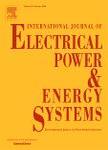版权所有:内蒙古大学图书馆 技术提供:维普资讯• 智图
内蒙古自治区呼和浩特市赛罕区大学西街235号 邮编: 010021

作者机构:Sao Paulo State Univ Ave Brasil 56 BR-15385000 Ilha Solteira SP Brazil
出 版 物:《INTERNATIONAL JOURNAL OF ELECTRICAL POWER & ENERGY SYSTEMS》 (国际电力与能源系统杂志)
年 卷 期:2019年第107卷
页 面:298-310页
核心收录:
基 金:Coordination for the Improvement of Higher Education Personnel (CAPES) Finance Brazilian National Council for Scientific and Technological Development (CNPq) [305852/2017-5] Sao Paulo Research Foundation (FAPESP) [2014/23741-9, 2015/21972-6] Fundacao de Amparo a Pesquisa do Estado de Sao Paulo (FAPESP) [15/21972-6, 14/23741-9] Funding Source: FAPESP
主 题:Allocation of capacitor banks Mixed-integer second-order cone programming Optimization Reconfiguration of distribution systems Voltage-dependent models
摘 要:This paper presents a study about operation planning for radial distribution systems using a mixed-integer second-order cone programming formulation. The proposal consists of a complete model for solving the problems of the reconfiguration of feeders and allocation of capacitor banks simultaneously, with the objective of achieving a minimum overall investment, in both fixed and switchable capacitor banks, and operational costs, related to the cost of energy losses. The approach includes a voltage-dependent load representation, as well as a precise representation of the operation of capacitor banks, which is also voltage dependent. The use of a mixed integer second-order cone programming model guarantees convergence to optimality using existing optimization software. A strategy to reduce the number of candidate nodes of the system for capacitor banks allocation is also presented. Several tests are performed using the 69-node distribution system and a real 2313-node distribution system, demonstrating the effectiveness of the proposal. The results indicate that better solutions can be obtained by performing the simultaneous optimization of the reconfiguration and allocation of capacitor banks than by solving the two problems sequentially, which may even lead to infeasible solutions. It is also verified that both the load and capacitor banks models have an influence on the problem s solution.